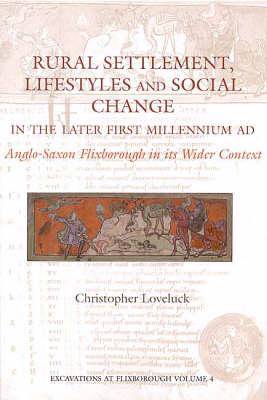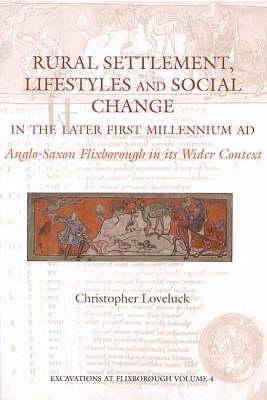
- Retrait gratuit dans votre magasin Club
- 7.000.000 titres dans notre catalogue
- Payer en toute sécurité
- Toujours un magasin près de chez vous
- Retrait gratuit dans votre magasin Club
- 7.000.000 titres dans notre catalogue
- Payer en toute sécurité
- Toujours un magasin près de chez vous
Rural Settlement, Lifestyles and Social Change in the Later First Millennium Ad at Flixborough, Lincolnshire
Anglo-Saxon Flixborough in Its Wider Context
Christopher Loveluck
50,45 €
+ 100 points
Description
Between 1989 and 1991, excavations in the parish of Flixborough, North Lincolnshire, unearthed remains of an Anglo-Saxon settlement associated with one of the largest collections of artefacts and animal bones yet found on such a site. In an unprecedented occupation sequence from an Anglo-Saxon rural settlement, six main periods of occupation have been identified, dating from the seventh to the early eleventh centuries; with a further period of activity, between the twelfth and fifteenth centuries AD. The remains of approximately forty buildings and other structures were uncovered; and due to the survival of large refuse deposits, huge quantities of artefacts and faunal remains were encountered compared with most other rural settlements of the period. The quality of the overall archaeological data contained within the settlement sequence is important for both the examination of site-specific issues, and for the investigation of wider research themes and problems, facing settlement studies in England, between AD 600 and 1050. Volume 4, offers a series of thematic analyses, integrating all the forms of evidence to reconstruct the lifestyles of the inhabitants. These comprise settlement-specific aspects and wider themes. The former include relations with the surrounding landscape and region, trade and exchange, and specialist artisan activity. Whereas the wider themes consider approaches to the interpretation of settlement character, the social spectrum of its inhabitants, changing relationships between rural and emerging urban centres, and the importance of the excavated remains within contemporary studies of early medieval settlement and society in western Europe.
Spécifications
Parties prenantes
- Auteur(s) :
- Editeur:
Contenu
- Nombre de pages :
- 256
- Langue:
- Anglais
- Collection :
- Tome:
- n° 4
Caractéristiques
- EAN:
- 9781842172568
- Date de parution :
- 12-11-07
- Format:
- Livre relié
- Format numérique:
- Genaaid
- Dimensions :
- 211 mm x 297 mm
- Poids :
- 1156 g







